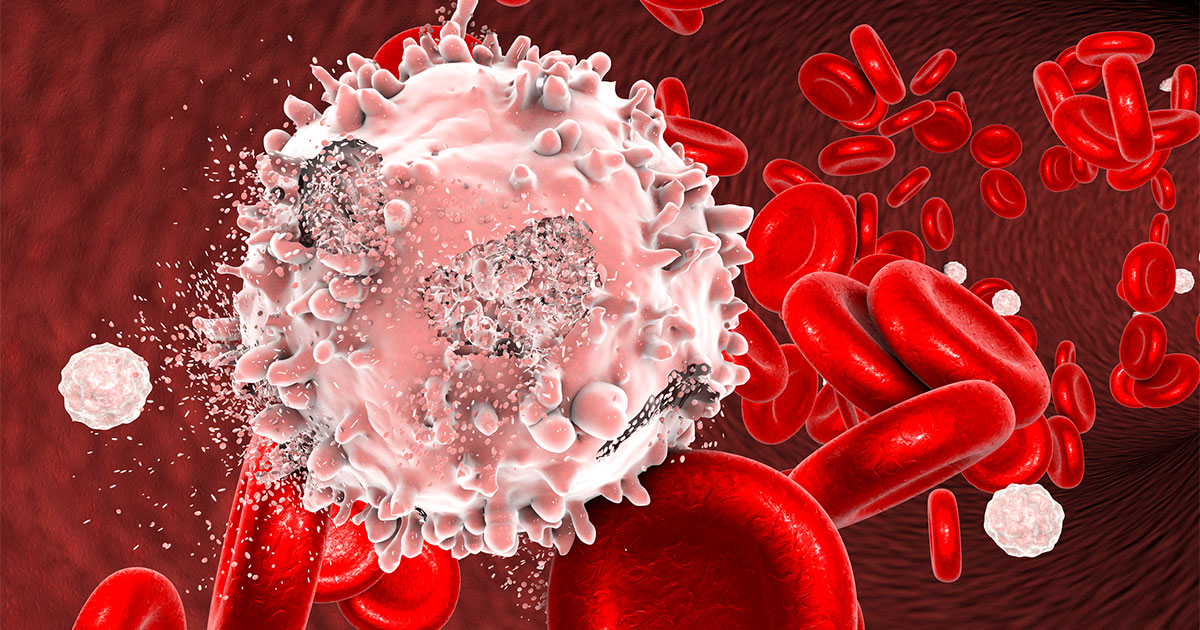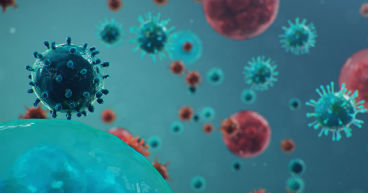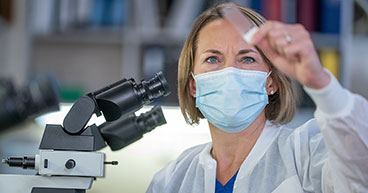
Family sometimes explains what ties cancer cases together. Up to 10 percent of all cancer cases are traced to gene mutations and inherited cancer syndromes passed down through generations. Now scientists are learning even more about the familial connection involved in one specific cancer: chronic lymphocytic leukemia (CLL), the most common type of leukemia in adults. In fact, emerging data collected during genetics research studies over a 10-year period “have provided the first direct evidence for inherited predisposition” to CLL, an article in the European Hematology Association's medical journal HemaSphere noted. The information may help doctors predict a person’s potential genetic predisposition for developing the disease.
What is CLL?
Most commonly diagnosed in people in their 60s and 70s and accounting for about 25 percent of new leukemia diagnoses, CLL is a blood cancer that forms in lymphocytes, which are white blood cells found in bone marrow.
As the body makes more mutated lymphocytes, they crowd out healthy blood cells, causing a variety of symptoms and making it difficult for the body to fight infection. Over time, these cells may spread to other areas, more commonly the spleen, lymph nodes and liver.
As its name indicates, CLL is considered chronic, meaning the disease is slow-growing and may not require immediate treatment for years. Over time, the disease may require radiation therapy, immunotherapy, chemotherapy, a stem cell transplant or other treatment.
The American Cancer Society (ACS) estimates that, in 2021, 21,250 new CLL cases will be diagnosed and 4,320 people will die from the disease. On average, a person’s lifetime CLL risk is one in 175, with men at slightly higher risk than women.
Get a nutritional plan developed based on your DNA profile.
Is leukemia genetic?
As with many types of leukemia, the greatest risk factor for CLL is age. But evolving research indicates that a person’s risk of developing CLL is often connected to whether they have relatives who have been diagnosed with the disease, says Eric Fowler, MS, Manager, Clinical Genetics, Western Region and Licensed Certified Genetic Counselor at City of Hope Chicago. The number of relatives and their age at diagnosis also may determine risk. In many cases, the connection is genetic. In others, it may come down to where the family lives and environmental factors at play there.
The number of relatives with CLL, and the closer the blood relationship, the greater the chances of inherited risk, Fowler adds. Why? Closer-degree relatives share more DNA, and they likely grew up in the same house and shared environmental exposures. Exposure to certain chemicals or radiation are among the risk factors for CLL.
“If the relative was diagnosed with CLL at a younger age, it’s going to impact risk more than someone who was diagnosed at a more standard age,” he says. “It may be heredity, it may be environmental components, or it may be a combination of both.”
Familial risks increase significantly with each additional first-degree relative with the disease. For instance:
- The average person has a 0.4 percent cumulative lifetime risk of developing CLL.
- If one first-degree relative—a parent, sibling or child—has been diagnosed with CLL, the risk increases to 2.15 percent.
- If two or more first-degree relatives have been diagnosed, the risk increases to 8.6 percent.
“That’s a big jump from just one first-degree relative,” he says.
Even the relationship to the first-degree relative matters. “If you have a sibling with CLL, it impacts risk even more than if you have a parent with it,” Fowler says. Other blood cancers have shown to be more likely to occur when a parent was diagnosed with the disease.
A comprehensive study that analyzed data of more than 16 million people in the Swedish Family-Cancer Database found that relatives of CLL patients also showed an increased risk for lymphomas (cancers that start in the lymph system) and blood cancers called myeloproliferative neoplasms—specifically myelofibrosis, polycythemia vera and essential thrombocythemia. These cancers occur when a stem cell in the bone marrow mutates, causing an overabundance of white cells, red cells and/or platelets.
Hereditary cause of CLL
The search for new genes that cause inherited risks for cancer is ongoing. There is evidence that inherited changes, or mutations in a gene called POT1 cause higher risks for CLL, melanoma skin cancer and brain tumors. It is possible that additional genes that cause risks for CLL will be discovered in the future.
More to learn
Tests in patients with CLL show specific alterations among the 23 human chromosomes. In some cases, pieces of a chromosome may be missing. Other patients may have an extra chromosome, according to the ACS.
Researchers also suggest that specific gene mutations may contribute to higher death rates in certain CLL patients. In a 2021 paper published in Nature, researchers said that CLL patients with BRAF, NRAS and several other specific gene mutations have a higher incidence of death by infection, which is the leading cause of death in CLL patients.
While the recent findings about inherited CLL risk offers insights into the potential origins of the disease, Fowler says other variables also need investigating because there’s still much to learn about the origins of the disease.
“They didn’t look at occupations, or environments where people live or work,” he says. “Some families have an inherited risk; some may have shared common variants in genes that add up to an overall higher risk for CLL.”
A matter of degrees
To better understand your cancer risk, it’s important for people with a family history of cancer to gather as much information about previous familial cases. Questions to get answered include:
- Which relatives of mine got cancer?
- How close a relative are they?
- What kind of cancer did they have?
- At what age were they diagnosed?
- Have any relatives seen a genetic counselor or had a genetic test?
As with CLL, the closer familial tie you have to the cancer patient, the higher your cancer risk. Family relationships are broken into three degrees:
First-degree: Fully biological parents, siblings and children
Second-degree: Aunts, uncles, grandparents, nieces and nephews and half-siblings
Third-degree: Great-grandparents, great-grandchildren, great-uncles, great-aunts and first cousins
What should you do?
Having an inherited cancer gene or a family history of cancer doesn’t mean you’ll get cancer, but it does increase the chances. Fowler recommends that those with a family history of CLL, or any blood cancer, educate themselves on the disease’s symptoms. In the case of CLL, symptoms may include:
- Swollen lymph nodes
- Night sweats
- Fatigue
- Shortness of breath
- Infections
- Unexplained weight loss
- Discomfort or fullness in the abdomen, caused by an enlarged spleen
“Talk with your doctor about it and inquire about genetic testing and the possible benefits of annual bloodwork as a screening tool,” he says. “Stay informed.”


